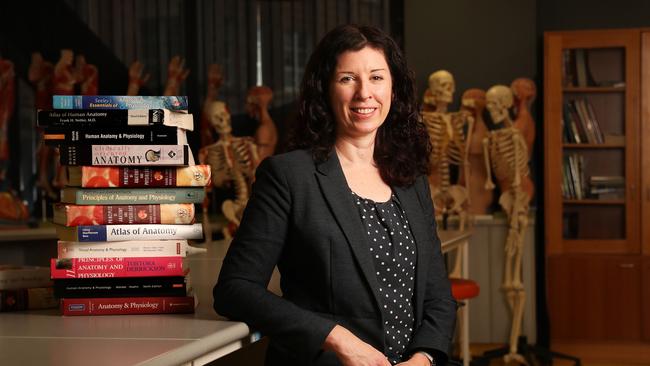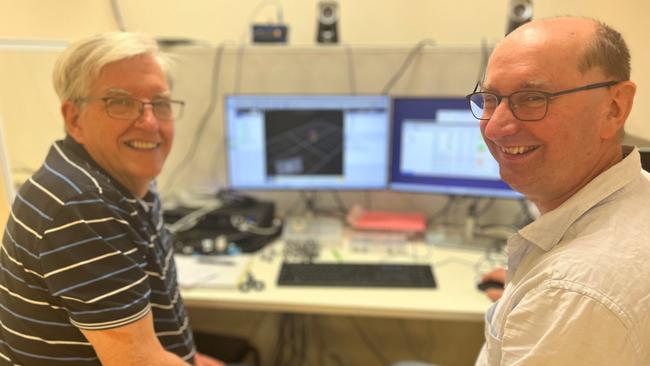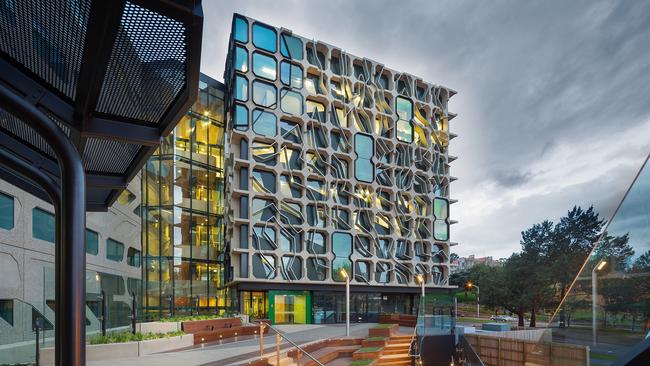Human Intelligent Movement Analysis Centre at Menzies Institute to focus on neurological disorders
A state-of-the-art new medical research centre has opened its doors in Hobart, using Hollywood technology to detect early signs of neurological disorders such as Alzheimer’s and Parkinson’s disease.

Tasmania
Don't miss out on the headlines from Tasmania. Followed categories will be added to My News.
Camera technology used to transform actors into digital avatars in video games and movies will be employed to detect early signs of neurological disorders such as Alzheimer’s and Parkinson’s disease at a state-of-the-art new research centre in Hobart.
The Human Intelligent Movement Analysis Centre (HIMAC), located in the Medical Science Precinct at the Menzies Institute for Medical Research on Liverpool St, will enable scientists and clinicians to track precise human movements using hi-tech equipment including eye-tracking technology and a wireless motion capture system.
HIMAC has been funded through a $512,000 University of Tasmania (UTAS) Infrastructure Grant and boasts a 12-camera Vicon system designed to track people’s movements in three-dimensional space at high speeds, with the aid of tiny markers attached to their bodies.
This is the same technology that allows actors to be turned into virtual avatars by digitising their body movement with great precision.

Associate Professor Jane Alty, a neurologist at the Wicking Dementia Research and Education Centre, said brain activity would also be measured at HIMAC, through a technique known as functional near infra-red spectroscopy.
This sees small infra-red lights placed on the outside of the head, with detectors measuring the amount of light transmitted through brain tissue.
“HIMAC will allow us to uncover insights into normal movement function, and also to detect the earliest changes to movements that occur in people affected by neurological disorders such as Parkinson’s disease, essential tremor, multiple sclerosis and Alzheimer’s disease – which present in distinct ways of moving,” Associate Professor Alty said.
A tracking system will be used at HIMAC to measure what exactly a person’s eyes are centred upon, revealing precisely what it is they are looking at and for how long.

“As neurologists, we routinely examine people’s eye movements in clinic as many neurological disorders, such as Parkinson’s, stroke and multiple sclerosis have subtle changes in the speed and accuracy of eye movements,” Associate Professor Alty said.
“The new eye tracking technology in HIMAC will help us undertake exciting world-class research in a variety of different neurological disorders.”
Dr Rebecca St George from the Menzies Institute said the new technology would allow researchers to measure just how hard certain parts of the brain were working when a person was performing a range of different activities, which was impossible when using standard brain scanning methods.
“When brain imaging is combined with precise motion capture and muscle activity, we can start to really understand how the brain is controlling complex movements, and equally what subtle changes to our movements say about the function of our brain,” she said.
More Coverage
Originally published as Human Intelligent Movement Analysis Centre at Menzies Institute to focus on neurological disorders





